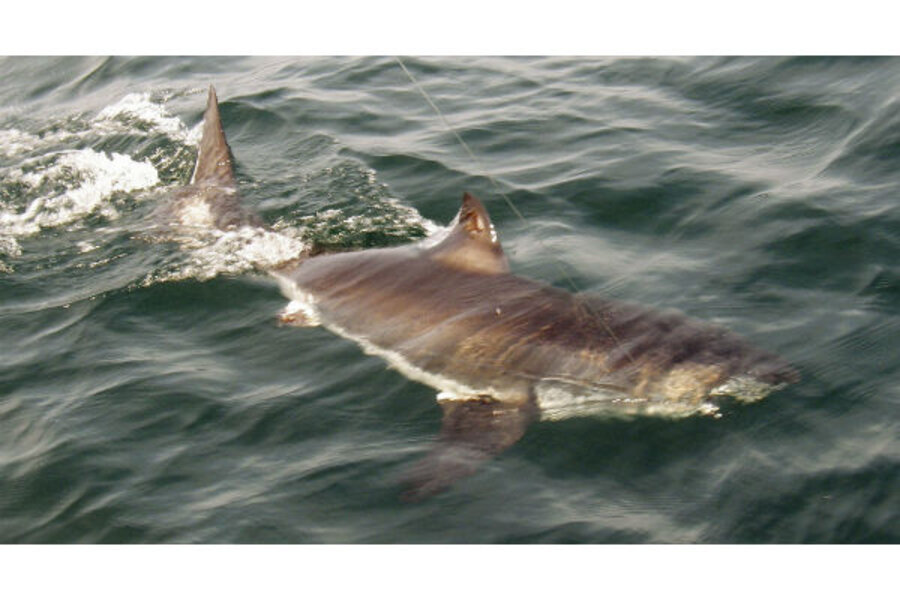Long in the tooth? Great white sharks can live to a ripe old age, study finds.
Loading...
New research into the life spans of great white sharks in the northwest Atlantic indicates that the apex predators can live as long as humans – at least into their 70s, and nearly three times as long as previously thought.
Until recently, sharks’ ages typically were determined by counting growth bands in the their vertebrae, similar to those found in trees. This technique had led marine biologists to believe that great whites only live into their 20s.
“It’s not an easy thing to read band pairs on shark vertebrae,” says Lisa Natanson, a fisheries biologist in the Apex Predators Program at the National Oceanic and Atmospheric Administration's Northeast Fisheries Science Center, and a lead author of the study published online Wednesday in PLOS ONE, a peer-reviewed, open-access scientific journal.
“It’s not like tree rings, where everybody knows for sure what band pairs look like and what they mean in terms of how often they are deposited. Every species [of shark] is completely different, so you have to start from scratch when defining the criterion for counting a band pair.”
Examining vertebrae archived at the National Marine Fisheries Service in Narragansett, R.I., Dr. Natanson initially began counting band pairs to determine the age of four female and four male sharks caught in the northwest Atlantic between 1967 and 2010.
While other researchers had counted the bands visible on x-rays, Natanson examined actual vertebrae. She soon identified additional rings within each band. When she counted those rings, she came up with much higher estimates for the predators’ ages. That’s when she decided to use radiocarbon dating to test the efficacy of each of the counting methods.
Radiocarbon dating – not to be confused with the carbon dating of fossils – relies on the known persistence of carbon isotopes left over in the ocean from nuclear weapons testing in the 1950s and 1960s.
By taking core samples from several points on the vertebrae and comparing the amount of radiocarbon in each sample with the established knowledge of the radiocarbon's persistence in the environment, Natanson and her colleagues were able to determine the actual age of the 8 sharks sampled.
“Not only were my higher band counts closer, but they weren’t even high enough,” she says.
The radiocarbon dating indicated that the oldest of the female samples had lived to be 40 years old, and the oldest male lived to be 73. Because the sample size was small, just four of each gender, Natanson does not believe this is any indication that males live longer than females. It just so happens that this particular male lived much longer than that particular female.
She also believes it likely that there are even older great whites swimming around in the northwest Atlantic.
“These are lower-end estimates because these are not the biggest white sharks that we’ve found out there swimming,” she says. “They are just the biggest ones that we have samples of.”
Because the sharks sampled all came from the northwest Atlantic – most were caught off Long Island and one was caught near Prince Edward Island – this does not necessarily mean that other great whites in other oceans or even other parts of the Atlantic have similar life spans.
“People say a white shark is a white shark is a white shark, but that’s just not true,” she says. “We are finding that the same species [of sharks] from different areas have different parameters and different longevities.”
While we know a great deal about other shark species, marine biologists know little about great whites. Scientists disagree on just how many sharks are swimming in the world’s oceans. As apex predators that feed at the top of the food chain, their numbers are low. Sharks currently are considered endangered and are listed as a prohibited species.
This new information can help to inform sustainable management of great white shark populations by offering insight into the number of pups that females typically produce in their lifespan.







